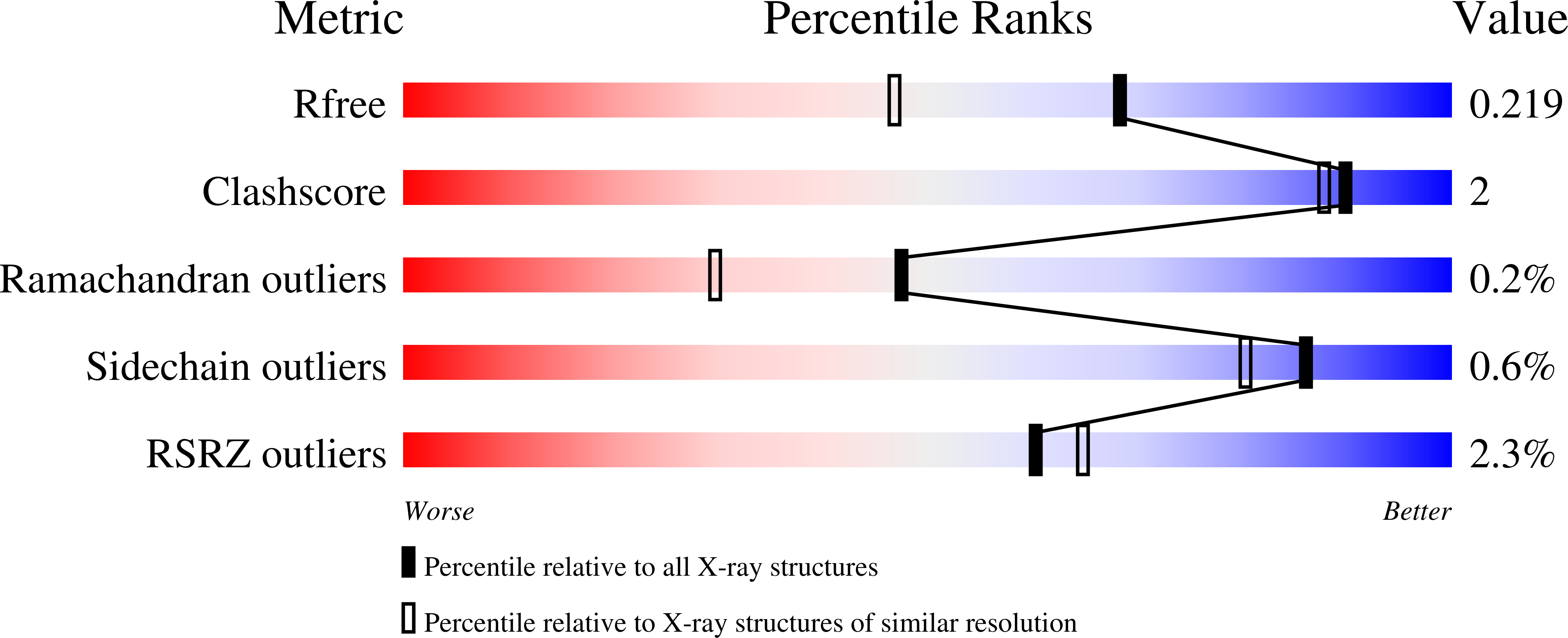Broad-Spectrum Cyclopropane-Based Inhibitors of Coronavirus 3C-like Proteases: Biochemical, Structural, and Virological Studies.
Dampalla, C.S., Nguyen, H.N., Rathnayake, A.D., Kim, Y., Perera, K.D., Madden, T.K., Thurman, H.A., Machen, A.J., Kashipathy, M.M., Liu, L., Battaile, K.P., Lovell, S., Chang, K.O., Groutas, W.C.(2023) Acs Pharmacol Transl Sci 6: 181-194
- PubMed: 36654747
- DOI: https://doi.org/10.1021/acsptsci.2c00206
- Primary Citation of Related Structures:
7TQ2, 7TQ3, 7TQ4, 7TQ5, 7TQ6, 7TQ7, 7TQ8, 8CZT, 8CZU, 8CZV, 8CZW, 8CZX, 8DGY - PubMed Abstract:
The advent of SARS-CoV-2, the causative agent of COVID-19, and its worldwide impact on global health, have provided the impetus for the development of effective countermeasures that can be deployed against the virus, including vaccines, monoclonal antibodies, and direct-acting antivirals (DAAs). Despite these efforts, the current paucity of DAAs has created an urgent need for the creation of an enhanced and diversified portfolio of broadly acting agents with different mechanisms of action that can effectively abrogate viral infection. SARS-CoV-2 3C-like protease (3CL pro ), an enzyme essential for viral replication, is a validated target for the discovery of SARS-CoV-2 therapeutics. In this report, we describe the structure-guided utilization of the cyclopropane moiety in the design of highly potent inhibitors of SARS-CoV-2 3CL pro , SARS-CoV-1 3CL pro , and MERS-CoV 3CL pro . High-resolution cocrystal structures were used to identify the structural determinants associated with the binding of the inhibitors to the active site of the enzyme and unravel the mechanism of action. Aldehydes 5c and 11c inhibited SARS-CoV-2 replication with EC 50 values of 12 and 11 nM, respectively. Furthermore, the corresponding aldehyde bisulfite adducts 5d and 11d were equipotent with EC 50 values of 13 and 12 nM, respectively. The safety index (SI) values for compounds 5c / 11c and 5d / 11d ranged between 7692 and 9090. Importantly, aldehydes 5c / 11c and bisulfite adducts 5d / 11d potently inhibited MERS-CoV 3CL pro with IC 50 values of 80 and 120 nM, and 70 and 70 nM, respectively. Likewise, compounds 5c / 11c and 5d / 11d inhibited SARS-CoV-1 with IC 50 values of 960 and 350 nM and 790 and 240 nM, respectively. Taken together, these studies suggest that the inhibitors described herein have low cytotoxicity and high potency and are promising candidates for further development as broad-spectrum direct-acting antivirals against highly pathogenic coronaviruses.
Organizational Affiliation:
Department of Chemistry and Biochemistry, Wichita State University, Wichita, Kansas 67260, United States.

















